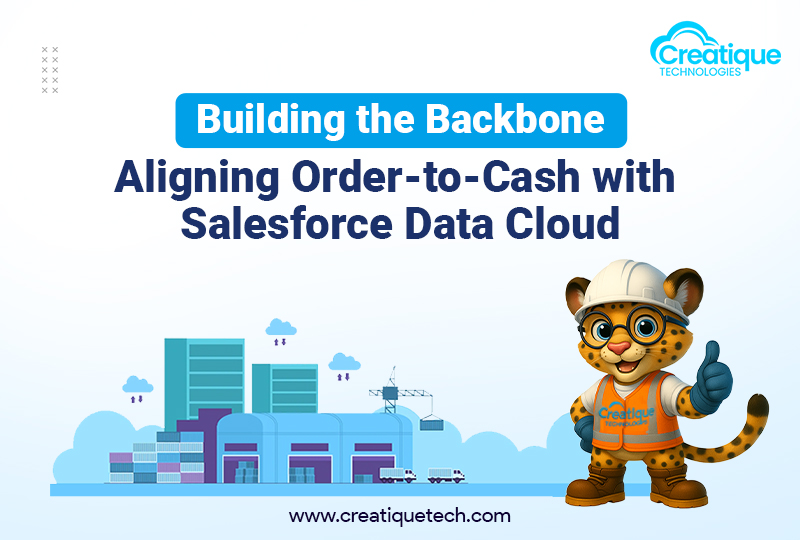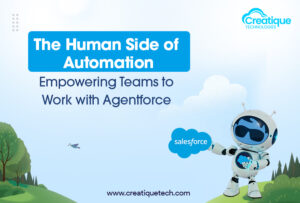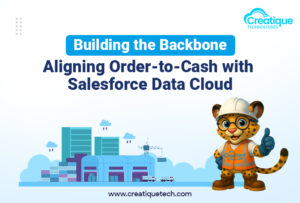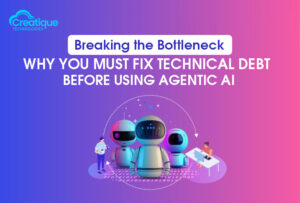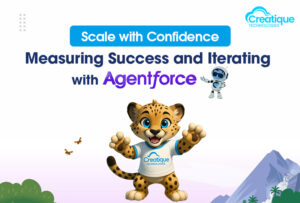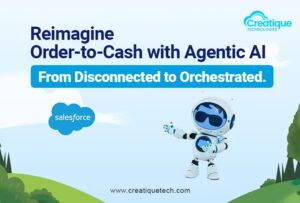You’ve cleaned up technical debt.
Your workflows are stable.
Now it’s time to make them intelligent.
But here’s the catch:
AI agents can’t operate without the right data.
And in most discrete manufacturing businesses, that data is scattered across too many systems.
Sales quotes live in CRM.
Order statuses sit in ERP.
Machine-level data comes from MES.
Invoices and payments are handled by finance tools.
If your AI agents have to “guess” what’s going on — they won’t act confidently.
That’s why the next step is all about data alignment using Salesforce Data Cloud.
Why Data Alignment is Essential for O2C
Your O2C process involves many moving parts:
→ Sales creates a quote
→ Ops confirms inventory and delivery timelines
→ Finance generates the invoice
→ Support manages post-sale requests
Each team often uses its own system — which means data is siloed, duplicated, or inconsistent.
When that happens:
→ Quotes don’t match orders
→ Invoices go to the wrong contact
→ Customers get confused
→ Internal teams lose trust in the system
Agentforce can fix none of this if the data feeding it is incomplete or misaligned.
Step 1: Map the Entire O2C Workflow
Before syncing data, map your entire O2C process — from lead to payment.
→ Where does each step live (CRM, ERP, MES, support)?
→ Which objects or records are involved at each step?
→ Where does information get handed off — and how?
→ What breaks when data isn’t shared properly?
Once you have this flow documented, it becomes easier to spot where your AI agents will need visibility and control.
Step 2: Integrate Data into Salesforce Data Cloud
Salesforce Data Cloud acts as a centralized brain — connecting your systems into a unified view.
To use it effectively:
→ Connect your ERP (e.g., SAP, NetSuite) for order, inventory, and invoice data
→ Pull in key metrics from your MES for fulfillment or machine performance
→ Sync financial data for cash collections and credit limits
→ Normalize records across systems: accounts, contacts, SKUs, pricing, delivery terms
This creates a real-time, 360° view of every customer, order, and transaction.
Now, Agentforce doesn’t have to ask: “What’s going on?”
It already knows.
Step 3: Apply Guardrails to Keep AI Compliant
Structured data enables action — but you still need control.
→ Define thresholds: e.g., only escalate orders over $100K
→ Restrict agent visibility for sensitive data (credit scores, financial terms)
→ Use audit trails to monitor agent-triggered updates
→ Create rules for data freshness: e.g., pricing must be updated within 24 hrs
This is where Agentforce becomes not just powerful — but safe.
Step 4: Build Shared Language Across Systems
Alignment isn’t just about syncing data.
It’s about making sure systems speak the same language.
→ Use common identifiers (like Account ID) across ERP, CRM, and MES
→ Create a central dictionary for field values and naming conventions
→ Standardize units (e.g., kg vs. lbs, INR vs. USD) to prevent confusion
→ Align product SKUs and categories across sales and supply chain
This removes ambiguity — so your agents act with full confidence.
What You Unlock with Structured Data
Once your data is aligned, you’re no longer chasing updates or fixing broken handoffs. Instead:
→ Orders flow across systems without delays
→ Agentforce knows when to act, escalate, or wait
→ Reporting becomes accurate and real-time
→ Sales, ops, and finance see the same truth
You now have the backbone to support intelligent, scalable automation.
Final Word: Don’t Feed AI Fragmented Data
Agentforce is only as smart as the data you give it.
Without a unified foundation, you’re not enabling automation — you’re risking miscommunication.
Salesforce Data Cloud lets you bring every system, process, and record into sync — so AI becomes proactive, not reactive.
Want Help Connecting Your Data?
At Creatique Technologies, we help manufacturing companies:
→ Map their O2C workflows across CRM, ERP, MES, and finance
→ Integrate systems into Salesforce Data Cloud
→ Align teams around a shared, accurate data model
→ Deploy AI safely with visibility, compliance, and scale
Ready to align your data for Agentforce?
→ Let’s schedule a free data alignment session — and show you how it works.

